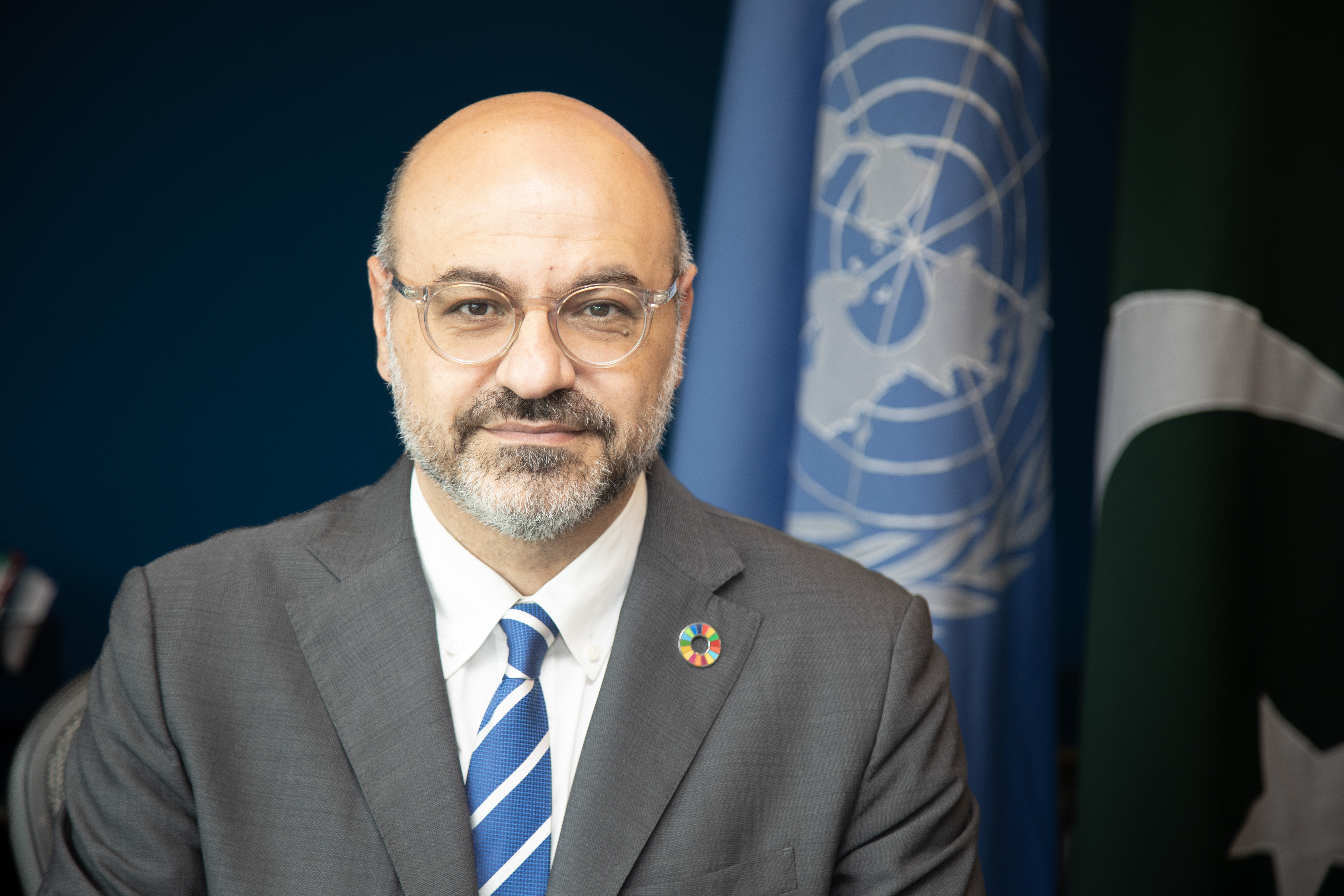Reform or Rupture: A Resilient Economy for Pakistan
December 4, 2023

At the 78th U.N. General Assembly (UNGA) held in September this year, Secretary-General, Mr. António Guterres put forward a critical decision facing the world today. “It is reform or rupture,” he said, outlining unfolding fractures in global economic and financial systems. The Secretary General stressed the need to redesign the international financial architecture for it to become truly inclusive and serve as a safety net for developing countries. Our UNDP Administrator, Achim Steiner, has also raised the alarm about the widening gap between 'the growth we get' – dominated by extraction, surging commodity prices, and unsustainable debt – and 'the development we want', which is driven by human-centered growth and innovation.
This rupture manifests itself in Pakistan in the evolving socio-economic, financial and development policy landscape saddled by a myriad of fast-converging challenges. Launched in September on the side-lines of the UNGA, UNDP's Integrated SDG Insights Report 2023 for Pakistan shows that the country is on track to achieve only 35 out of 169 SDG targets. As a policy prescription, the report proposes that if Pakistan is to reduce the number of people living in poverty from 6.1 million to 3.9 million by 2030, it will need a comprehensive 'SDG Push' of high-intensity economic reforms and accelerator pathways in priority policy areas such as taxation and revenue, sustainable debt management and climate finance.
For much of 2023, Pakistan's economic trajectory has fluctuated between default panic to mitigation mode. Political uncertainty, rising global commodity prices, and the tightening of external and domestic financing conditions have led to less than favourable economic forecasts for 2024, with the Asian Development Bank projecting a 1.9 percent GDP growth, the World Bank projecting 1.7 percent, and the IMF estimating a growth of 2.5 percent.
Any silver lining? Yes. This year the government's prudent budget revisions cut spending and raised taxes, while successfully negotiating with the IMF to resume and extend its stalled $3 billion loan programme till April 2024, thus pulling the country back from an economic cliff's edge. In its review this month, the IMF has commended Pakistan for its successful progress in achieving quantitative targets during the first quarter of this year. Media reports suggest that while the ongoing review of the current programme may conclude successfully with the release of the final tranche, transition to the next programme will be essential for continued stabilisation but it will not be easy. Interestingly, in its latest long-term outlook, the IMF has projected an optimistic five percent growth in 2028.
Pakistan is not out of the woods yet. Beyond the life of the current IMF programme, the scale and source of financing required for Pakistan's sizeable external payments remain concerning. The country needs to repay $77 billion in external debt between 2023 to 2026 -- a hefty amount for a $350 billion economy. The road to 2028 will be long and tough. Achieving an ambitious growth target of five percent will require steadfast political will, consistency in policy reforms, and innovative policy solutions with an eye toward enhancing productivity, revenue and financing. It is critical that Pakistan urgently shifts its economic and financial policy paradigm from mitigation to enduring resilience.
Published this month, the 2024 UNDP Asia-Pacific Regional Human Development Report (Pakistan included) tells us that the region's human development story is one of 'progress, disparity, and disruption'. To unlock new drivers of growth in Pakistan, the report calls for recalibrating and pivoting growth strategies to focus more on fintech and agri-tech. Reform must be seen as the lynchpin of economic resilience. It fortifies crucial components of the economic system, adapts them to changing times, and equips them to weather shocks and uncertainties. For a country like Pakistan facing complex, multidimensional challenges across the domains of climate, economy, politics and security, achieving economic resilience requires a comprehensive and coordinated approach.
A robust architecture for innovative Financing for Development frameworks and solutions, covering both the public and the private sectors, and aligned with the U.N.'s Integrated National Financing Framework, can be a step in that direction. Some countries are already succeeding with thematic SDG sovereign bonds for the public sector, and blended finance and crowd-funding for the private sector.
For Pakistan, interventions could include providing access to capital markets for debt issuance, linking sovereign wealth funds to SDG-aligned projects, providing support for social protection programmes such as BISP, strengthening risk insurance to protect critical assets and livelihoods, as well as enhancing public finance management, governance modernisation, and improved data analytics.
The private sector should actively be engaged to mobilise development and climate financing in public-private projects to reduce reliance on conventional sources of finance. Pakistan's new finance instruments, for example the Special Investments Facilitation Council (SIFC) are part finance puzzle, tackling challenging issues such as business efficiency and transparency, as well as the enabling environment in which investments would land. On this front, proactive dialogue and engagement with Pakistan's development partners, with our own instruments such as the UNDP SDG Investments & Climate Financing Facility (established last year in partnership with the Government of Pakistan) and others is critical.
Pakistan must therefore work towards building a resilient economy that deliberately chooses innovation and reform or risk stagnation. As such, the choice may appear clear between 'reform or rupture,' but it must be translated into bold and decisive action to pave the way for a prosperous, resilient Pakistan.
Dr. Samuel Rizk
Resident Representative
UNDP Pakistan

 Locations
Locations